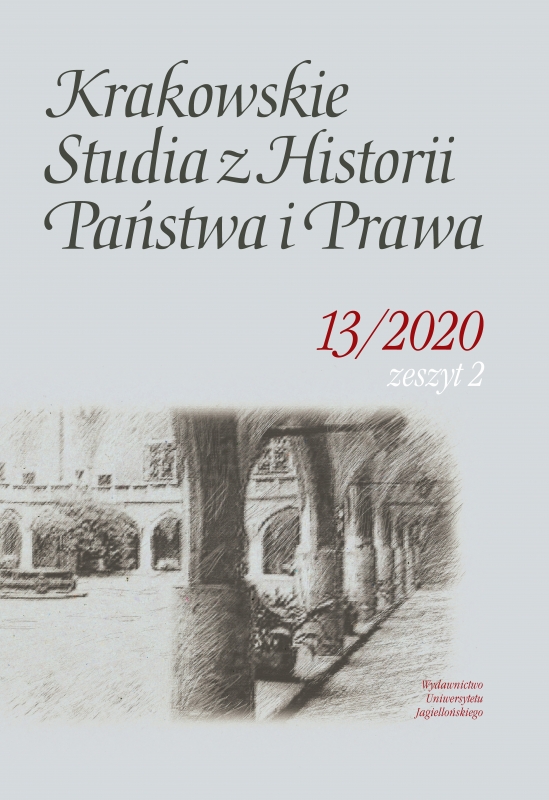Polskie ustawy o zwalczaniu przestępczości urzędniczej z lat 1920–1921
Polish Acts of 1920 and 1921 on Combating Offences by Public Officials
Author(s): Damian SzczepaniakSubject(s): History
Published by: Wydawnictwo Uniwersytetu Jagiellońskiego
Keywords: łapownictwo; przestępstwa urzędnicze; Sejm Ustawodawczy; urzędnik; Ustawa z 30 stycznia 1920 r. w przedmiocie odpowiedzialności urzędników za przestępstwa popełnione z chęci zysku; Ustawa z 18 marca
Summary/Abstract: In 1920–1921, the Polish Legislative Sejm issued two legal acts the purpose of which was to facilitate the fight against offences committed by officials of the public administration. Offences committed in connection with a tenure in order to gain profit were punishable by death by firing squad. Moreover, the acts further placed criminal liability on persons guilty of bribing a public official, or of complicity in offences committed by the officials. The introduction of the act of 1920 aroused great controversy, which was particularly visible during the parliamentary debate on its draft. The other act, initially conceived as an amendment to the first one, repeated its regulations to a large extent. The enactment of these strict provisions during the difficult time of establishing the structures of the newly independent state and the military campaign to secure the country’s borders was one way of resolving one of its current problems. The acts, temporary in character from the very beginning, were in effect for just over two years. However, despite the short period of validity, they left a considerable legacy in the form of numerous judicial decisions of the Supreme Court. This article is an attempt to view the acts from the perspective both of the principles which guided their creators and of the judicial practice itself. Therefore, along with the particular version of the draft bills and the reports from the parliamentary sessions, the analysis covers the ample jurisdictional output. This approach makes it possible to reconstruct the basic legal issues which arose in the context of application of the law and to draw conclusions in reference to the pronounced penalties. Furthermore, the analysis allows – within the scope enabled by the accessible sources – for demonstrating the extent to which the legislative assumptions were put into practice.
Journal: Krakowskie Studia z Historii Państwa i Prawa
- Issue Year: 13/2020
- Issue No: 2
- Page Range: 169-204
- Page Count: 36
- Language: Polish

